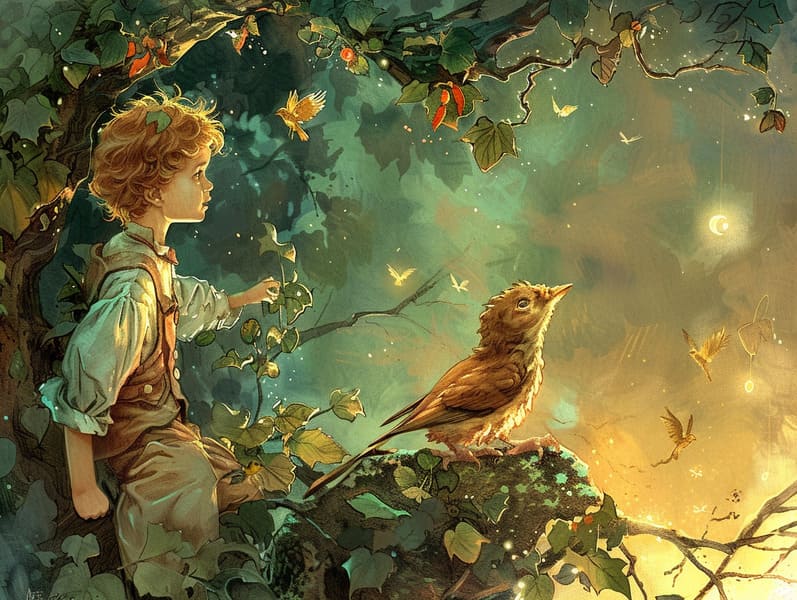The Emergence of Online Fairy Tales and Their Steadfast Beauty.
The Emergence of Online Fairy Tales and Their Steadfast Beauty.
Blog Article

Children's fairy tales have long histories. These tales have been narrated from one generation to the next far before they were ever recorded. They were born from a variety of societies, including Indigenous traditions. They were initially disseminated among adults, often carrying themes and messages concerning the societal norms and beliefs of the time.
The renowned Brothers Grimm, the two Grimm brothers, were among the first to compile many of these beloved fairy tales. Their compilation, "Grimm's Fairy Stories," included tales like "Cinderella," "Hansel and Gretel," and "Schneewittchen," which have since become staples in the world of timeless fairy tales. Similarly, Hans Christian Andersen's whimsical stories, such as "The Mermaid's Tale," and "The Duckling that Could," have enchanted hearts worldwide, securing their place in the pantheon of famous fairy tales.
Even though they are old, fairy tales remain as important as ever, especially as children's bedtime stories. These delightful tales are now available in various formats, including gorgeously illustrated books, charming animations, and online fairy tales.
Their continued relevance can be traced to several whimsical characteristics:
Important Morals: Classic fairy tales often present important moral lessons. Stories like "The Tale of the Boy Who Cried Wolf" teach the significance of truthfulness, while "The Race of the Tortoise and the Hare" exemplify the benefits of determination and meekness. These stories offer young ones clear distinctions between ethical and unethical, developing their moral compass in a gentle yet profound way.
Warmth and Understanding: Classic fairy tales frequently illustrate personalities facing difficulties and adversities, provoking readers to relate with their struggles and root for their triumphs. For instance, "The Story of Beauty and the Beast" conveys the importance of looking beyond appearances to perceive the real character of a individual, fostering insight and comprehension.
Cultural Understanding: Many fairy tales are deeply embedded in the cultural contexts from which they grew. Understanding these fairy tales can provide captivating looks into different historical contexts, promoting a sense of global insight and recognition.
Imagination and Creativity: The fanciful elements in traditional fairy tales—magic wands—trigger children’s fantastical thinking. These narratives move readers to supernatural realms, enhancing imaginative thinking and a sense of amazement that persists a lifetime.
Old fairy tales are not only charming but also educational. They function as spellbinding tools in developing various thinking and feeling skills in young readers. When timeless fairy tales are read aloud, they boost speech development by showing new words and sophisticated sentence structures. This practice also nurtures hearing perception and attention, as kids focus on every detail, keen to see what happens next.
Furthermore, debating the themes and characters of ancient fairy tales can enhance logical thinking and reasoning skills. The young are guided to recognize patterns, predict happenings, and make sense of cause and effect. These reflections also promote young ones express their thoughts and feelings, enhancing their emotional intelligence.
In today’s cyber age, the accessibility of online storybooks has made these narratives more available than ever. Online resources and programs give broad selections of timeless fairy tales that can be experienced or listened on anytime, anywhere. Fairy tales read aloud are particularly well-liked, offering an charming way for kids to savor these whimsical stories. Voice books and read-to-me stories take characters and settings to life, often supported by bewitching sound effects and music that enrich the tale-telling adventure.
The timeless fascination of timeless fairy tales lies in their ability to adjust to new eras while continuing with their core values. Contemporary modernizations of these stories often integrate more varied protagonists and modern settings, making them relatable to today’s audience. However, the underlying themes of valor, sympathy, and truth remain unchanged, continuing to connect with audiences of all ages.
Timeless fairy tales also offer a sense of ease and recognition. They impart upon a structured narrative with a obvious beginning, this site middle, and end, often wrapping up with the wrap-up of conflicts and the triumph of right over wrong. This consistency can be comforting for kids, making known a sense of dependability in an constantly changing world.
Classic fairy tales continue to mesmerize and inform new generations, maintaining their captivation and importance in modern society. As children's night stories, they showcase a perfect blend of charm and understanding, nourishing moral values, empathy, and creativity. The existence of digital storybooks and the well-liked nature of fairy tales spoken assure that these ancient tales remain accessible to new generations.
By safeguarding and imparting these tales, we continue to cherish the rich tapestry of tradition and cultural heritage. Whether you are accessing a vividly illustrated book, experiencing a online collection, or listening through an read-aloud story, the grace of bedtime fairy tales is always within reach. These narratives illustrate of the unchanging nature of fairy tales and its ability to bind us across epochs and places.
Be it you are viewing a vibrantly illustrated book, delving into a internet library, or listening through an sound book, the grace of famous fairy tales is always within reach.
These stories illustrate of the continued strength of stories and its ability to unite us across time and space, forging a link that charms and informs alike.